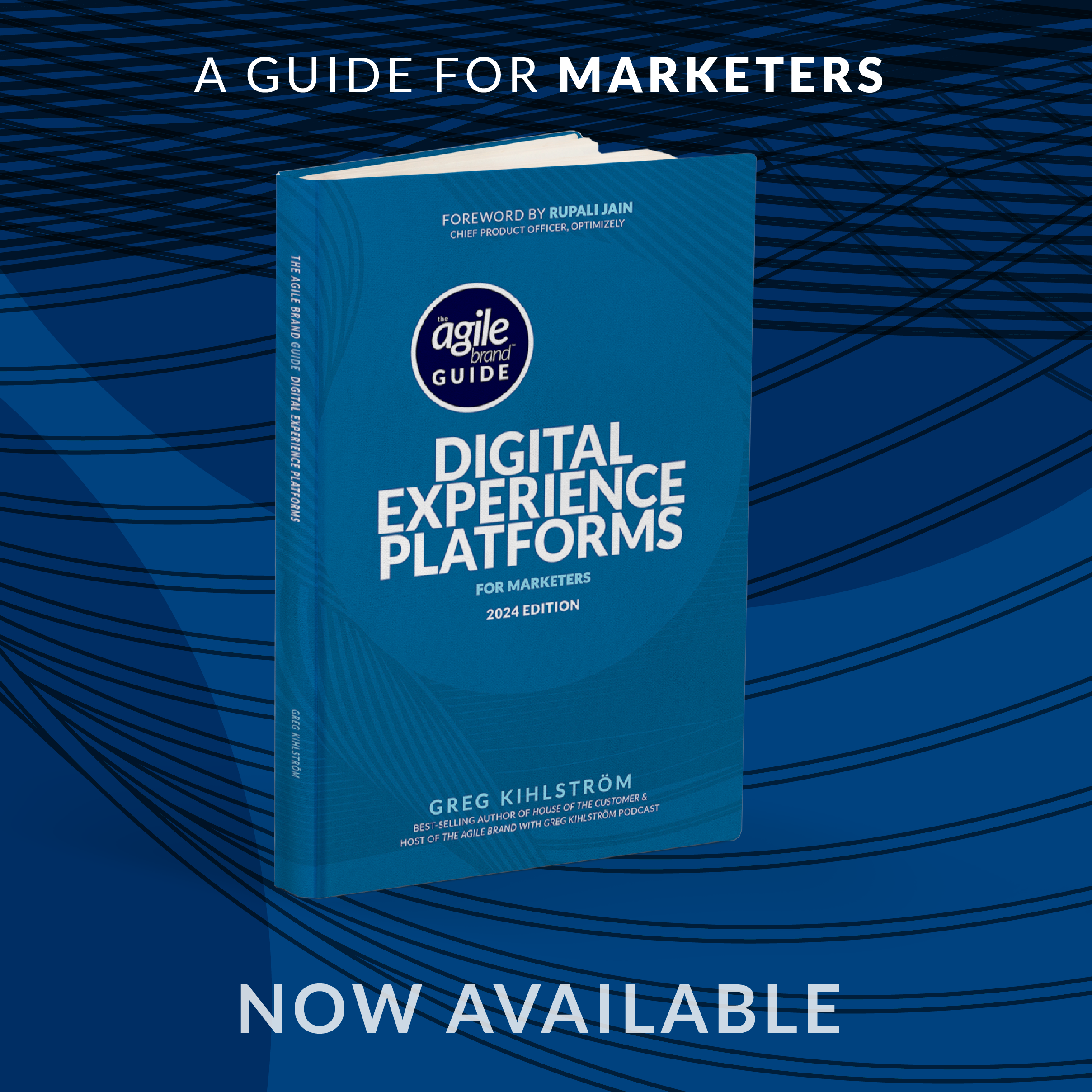This article was based on the interview with Christian Nelissen, Chief Data and Analytics Officer, National Australia Bank by Greg Kihlström, AI and Marketing Technology keynote speaker for The Agile Brand with Greg Kihlström podcast. Listen to the original episode here:
At enterprise scale, customer experience orchestration can become an unruly beast—particularly when you have to balance millions of customers, dozens of engagement channels, and thousands of decision models. But Christian Nelissen, Chief Data and Analytics Officer at National Australia Bank (NAB), believes that with the right architecture and mindset, it’s not only manageable—it’s transformative.
Speaking at PegaWorld 2025, Nelissen shared how NAB has operationalized what it calls its “customer brain,” a centralized intelligence layer that bridges the gap between service, sales, and relationship-building across all customer touchpoints. It’s a story not just about data, but about decisions—made timely, respectfully, and with a human-centered lens.
Building One Brain for a Bank
“We take everything we know about our customer and feed it into the brain,” Nelissen explained. “Then the brain is connected to all of our channels… inbound or outbound, human or digital. We can have that one conversation with the customer”.
This “brain” is NAB’s implementation of the Pega decisioning engine, which functions as a central nervous system across 16 channels and 8 million customers. The bank uses it to manage more than 2,000 adaptive models and 300 possible actions, choosing the best conversation to have in real time. This isn’t just multichannel—this is true omnichannel orchestration with a single intelligence layer ensuring consistency and relevance.
The scale is daunting, but as Nelissen points out, the technology is only one half of the equation. Equally critical is organizational clarity. “You really have to help the whole bank understand what the capability is,” he said. “We deal with the complexity… so we try not to bring the complexity into the organization.”
From Campaigns to Conversations
Marketing leaders often throw around the phrase “customer-centricity,” but NAB has institutionalized it in how it prioritizes actions. One of Nelissen’s core philosophies is to “talk to a customer about what’s most important to the customer—not what’s most important to the bank.”
He invokes a surprising reference point: “In the 70s, your bank knew you as an individual… the branch manager didn’t try to sell you a credit card every time they saw you. They talked about your family.” By anchoring the digital strategy in this old-school mindset, NAB is resisting the urge to over-optimize for conversion at the cost of customer trust.
The approach is paying off. By using narrow triggers instead of wide campaigns, NAB recently reached out to just 20,000 customers and received a 15% response rate. “That’s 3,000 customers,” Nelissen pointed out. “In an old school way, I’d go to 100,000 customers to get to that same population.” Not only does this reduce unnecessary outreach, but it also opens up more “bandwidth” for meaningful service and engagement conversations.
Triggers Over Propensities
Rather than relying solely on predictive modeling, NAB uses customer behavior as the starting point for action. “We always start with triggers,” Nelissen said. “Customers do and share with us a whole bunch of information that… you can either push into a propensity model and have it blended away, or you can choose to respond to the actual trigger.”
He cites examples that are immediately relatable: downloading statements (a likely precursor to shopping for credit), using mortgage calculators, or even forgetting to take cash out of an ATM—each of these moments can trigger a highly relevant action. “Once you really start getting people thinking, ‘if I see that, I should do that,’ there’s a lot more triggers than you ever imagine,” he said.
This strategy reduces the guesswork and aligns engagement with the customer’s intent. Importantly, it also enhances the perception of relevance—customers don’t feel “targeted” so much as understood.
Ethics Isn’t a Buzzword—It’s a Gatekeeper
When asked about trust and transparency, Nelissen didn’t hesitate. “We have a rule… don’t be creepy.” It’s a surprisingly effective heuristic that guides how the bank decides whether an action feels appropriate. “The ability to use our customers’ data to help them is based entirely on the trust that they have in us. That’s more valuable than any given sale.”
To operationalize this, NAB has embedded a data ethics assessment into its workflow. “Before you do something new, there’s a set of decision criteria… and the thing has to pass the ethics assessment,” he noted. It’s not a rubber stamp—Nelissen confirmed that some initiatives have been halted, even when they had internal executive support. “They just weren’t the right thing to do for the customer.”
This is a particularly salient point for marketers operating in highly regulated or public trust-dependent sectors. Building a centralized decisioning engine is one thing. Ensuring that it doesn’t become a conversion-optimized surveillance machine is another.
The Cost of Experimentation Has Changed
Traditional marketing logic would suggest you test everything before scaling—and discard low-performers quickly. But Nelissen offers a counterpoint rooted in NAB’s new capabilities: “The cost of experimentation, the cost of failure… has changed significantly.”
One example: a low-lift message that reminds customers to notify the bank of overseas travel. On paper, it may underperform—except during school holidays, when it spikes in relevance. In the past, a dip in performance might have prompted the bank to kill the initiative. Now, thanks to lower execution costs and always-on infrastructure, it simply runs continuously. The peaks justify its existence.
This is an important shift for marketing leaders: operational agility allows for more experimentation without high overhead. The real cost is not in failure, but in missed opportunities due to an overly cautious test-and-learn culture.
What This Means for Marketing Leaders
Christian Nelissen’s playbook offers several key takeaways for enterprise marketers:
- Unify decision-making: A single “brain” connected to all touchpoints enables consistent, relevant engagement. Centralization doesn’t mean rigidity—it means coherence.
- Trigger-first thinking: Behavioral cues are often more powerful than predictive models. Start with what the customer is doing and respond accordingly.
- Trust is a differentiator: Ethics policies shouldn’t be passive documents. Operationalize them to ensure actions remain aligned with customer expectations.
- Scale through precision: Moving from large campaigns to micro-targeted actions can drive better outcomes with less noise—and fewer annoyed customers.
Marketing Like It’s 1979—But Smarter
Christian Nelissen’s vision isn’t about being retro for nostalgia’s sake. It’s about recapturing the intimacy and attentiveness of local banking relationships—and scaling them using modern infrastructure. The shift from campaigns to conversations, from segment-level modeling to trigger-based personalization, is not merely technical. It’s cultural.
And as the economics of experimentation continue to shift, marketing leaders who embrace this philosophy will find they can do more, with less, and with greater empathy. In a world of machine learning, trust and relevance remain human strengths. NAB’s “customer brain” proves that you can build systems to scale those too.











